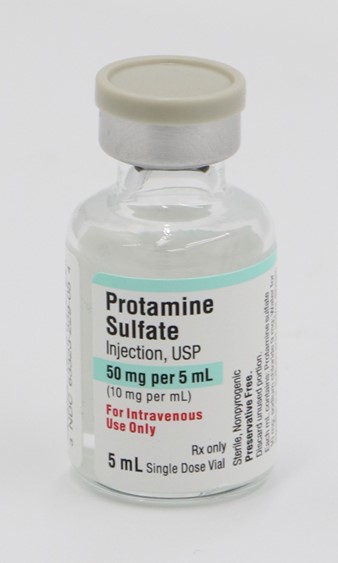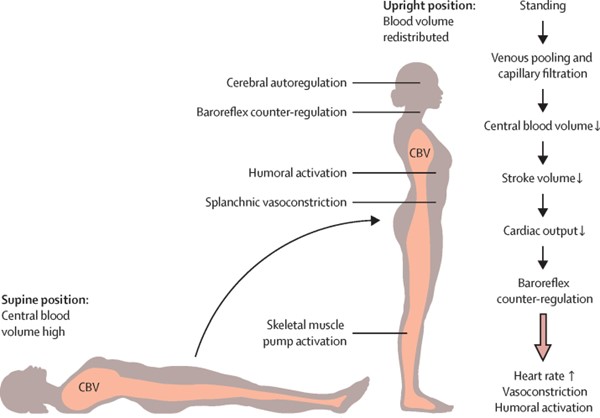Which medication should the nurse have available to reverse heparin's effects for a client who has thrombophlebitis and is receiving a continuous heparin infusion?
Protamine sulfate.
Deferoxamine.
Sodium polystyrene sulfonate.
Acetylcysteine.
The Correct Answer is A
Protamine sulfate is a medication that can be used to reverse the anticoagulant effects of heparin1.
It is a polycationic protein drug obtained from the sperm of fish and is used to reverse the anticoagulant effect of unfractionated heparin (UFH)2.

Choice B, Deferoxamine, is not the correct answer because it is a medication used to treat iron overload, not to reverse heparin’s effects.
Choice C, Sodium polystyrene sulfonate, is not the correct answer because it is a medication used to treat high levels of potassium in the blood, not to reverse heparin’s effects.
Choice D, Acetylcysteine, is not the correct answer because it is a medication used to treat acetaminophen overdose and to loosen thick mucus in individuals with cystic fibrosis or chronic obstructive pulmonary disease.
Nursing Test Bank
Naxlex Comprehensive Predictor Exams
Related Questions
Correct Answer is A
Explanation
The nurse should inform the charge nurse about her suspicion.
The charge nurse is responsible for managing the unit and can take appropriate action to investigate the matter and ensure that proper procedures are followed.
Choice B is incorrect because reporting the incident to the hospital security department is not the first step that should be taken.
The charge nurse should be informed first and can then decide if further action, such as involving the security department, is necessary.
Choice C is incorrect because it is not appropriate for the nurse to ask assistant personnel (AP) to observe the other nurse’s actions.
This could create a hostile work environment and may not be an effective way to address the issue.
Choice D is incorrect because approaching the other nurse directly to discuss the suspicion may not be the best course of action.
It could create tension and conflict between the two nurses and may not lead to a resolution of the issue.
Instead, informing the charge nurse allows for proper procedures to be followed in addressing the matter.
Correct Answer is B
Explanation
Postural hypotension is a potential adverse effect of atenolol.
It can cause dizziness, faintness, or lightheadedness when getting up from a lying or sitting position suddenly12.

Choice A, Constipation, is not the correct answer because it is not a commonly reported adverse effect of atenolol.
Choice C, Dermatitis, is not the correct answer because it is not a commonly reported adverse effect of atenolol.
Choice D, Cardiac arrest, is not the correct answer because it is not a commonly reported adverse effect of atenolol.
Whether you are a student looking to ace your exams or a practicing nurse seeking to enhance your expertise , our nursing education contents will empower you with the confidence and competence to make a difference in the lives of patients and become a respected leader in the healthcare field.
Visit Naxlex, invest in your future and unlock endless possibilities with our unparalleled nursing education contents today
Report Wrong Answer on the Current Question
Do you disagree with the answer? If yes, what is your expected answer? Explain.
Kindly be descriptive with the issue you are facing.
